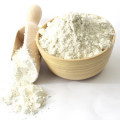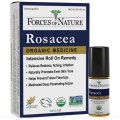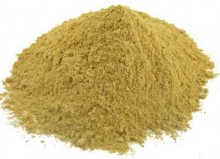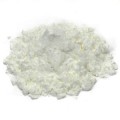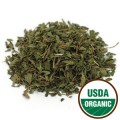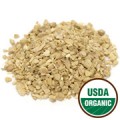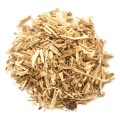 Loading... Please wait...
Loading... Please wait...- Home
- About Us
- Shipping, Returns & FAQ's
- Contact Us
-
For Your Information
- Canadian Customers Have a Choice if Shipping Via UPS
- Aura Cacia Homemade Aromatherapy Recipes
- Bella Nella Altered Art & Paper Crafts Blog
- Forms of Herbal Preparations
- Laundry Tips To Conserve Energy Blog from The Laundress
- The Story of Frontier Natural Products Co-Op
- Sovereign Silver Hydrosol and Aloe Protocol Stops Downward Spiral of Gut Dysbiosis
- Disclaimers
- Recommended Links
- RSS/Recent News
- The Story of Typhoon Housewares
- Reviews/Testimonials
- Raw Ingredients for Mfg
- Home
- Grocery
- Sweeteners/Honey
- Licorice Root Conventional/Certified Organic Bulk
Licorice Root Conventional/Certified Organic Bulk
Product Description
Latin/Botanical Name: Glycyrrhiza glabra
Common Names: Chinese Licorice, Gan Cao, Kan-ts'ao, Kuo-lao, Licorice, Licorice Root, Ling-t'ung, Liquorice, Mei-ts'ao, Mi-kan, Mi-ts'ao, Sweet Licorice, Sweet Wood, Yasti Madhu
Properties:
Anti-allergic, anti-arthritic, anti-inflammatory, demulcent, emollient, estrogenic (mild), expectorant, laxative, pectoral (moderate), soothing
Indicated for: 
Addison's disease, allergic rhinitis, arthritis, athlete's foot, baldness, bronchitis, bursitis, canker sores, catarrh of the upper respiratory tract, chronic fatigue, colds, colitis and intestinal infections, conjunctivitis, constipation, coughs, dandruff, depression, duodenal-ulcers, emphysema, exhaustion, fibromyalgia, flu, fungal infections, gastritis, gingivitis and tooth decay, gout, hayfever, heartburn, hepatitis, inflamed gallbladder, liver disease, Lyme disease, menopause, prostate enlargement, psoriasis, shingles, sore throat, spleen disorders, tendinitis, throat problems, tuberculosis, ulcers, viral infections, yeast infections. Reducing stomach acid and relieving heartburn and indigestion. Increasing bile flow and lowering cholesterol. Improving resistance to physical and emotional stress.
Licorice root has an impressive list of well documented uses and is probably one of the most over-looked of all herbal remedies. It is used for many ailments including asthma, athlete's foot, baldness, body odour, bursitis, canker sores, chronic fatigue, depression, colds and flu, coughs, dandruff, emphysema, gingivitis and tooth decay, gout, heartburn, HIV, viral infections, fungal infections, ulcers, liver problems, Lyme disease, menopause, psoriasis, shingles, sore throat, tendinitis, tuberculosis, ulcers, yeast infections, prostate enlargement and arthritis.
Licorice root contains many anti-depressant compounds and is an excellent alternative to St. John's Wort. As a herbal medicine it has an impressive list of well documented uses and is probably one of the most over-looked of all herbal wonders. Licorice is useful for many ailments including asthma, athlete's foot, baldness, body odor, bursitis, canker sores, chronic fatigue, depression, colds and flu, coughs, dandruff, emphysema, gingivitis and tooth decay, gout, heartburn, HIV, viral infections, fungal infections, ulcers, liver problems, Lyme disease, menopause, psoriasis, shingles, sore throat, tendinitis, tuberculosis, ulcers, yeast infections, prostate enlargement and arthritis.
Hundreds of potentially healing substances have been identified in licorice as well, including compounds called flavonoids and various plant estrogens (phytoestrogens). The herb's key therapeutic compound, glycyrrhizin (which is 50 times sweeter than sugar) exerts numerous beneficial effects on the body, making licorice a valuable herb for treating a host of ailments. It seems to prevent the breakdown of adrenal hormones such as cortisol (the body's primary stress-fighting adrenal hormone), making these hormones more available to the body.
It has a well-documented reputation for healing ulcers. It can lower stomach acid levels, relieve heartburn and indigestion and acts as a mild laxative.
It can also be used for irritation, inflammation and spasm in the digestive tract. Through its beneficial action on the liver, it increases bile flow and lowers cholesterol levels.
Licorice also appears to enhance immunity by boosting levels of interferon, a key immune system chemical that fights off attacking viruses. It also contains powerful antioxidants as well as certain phytoestrogens that can perform some of the functions of the body's natural estrogens; very helpful during the menopause. Glycyrrhizinic acid also seems to stop the growth of many bacteria and of viruses such as influenza A.
In the respiratory system it has a similarly soothing and healing action, reducing irritation and inflammation and has an expectorant effect, useful in irritating coughs, asthma and chest infections.
It has an aspirin-like action and is helpful in relieving fevers and soothing pain such as headaches. Its anti-allergenic effect is very useful for hay fever, allergic rhinitis, conjunctivitis and bronchial asthma. Possibly by its action on the adrenal glands, licorice has the ability to improve resistance to stress. It should be thought of during times of both physical and emotional stress, after surgery or during convalescence, or when feeling tired and run down.
Licorice with glycyrrhizin may help to:
Control respiratory problems and sore throat. Licorice eases congestion and coughing by helping to loosen and thin mucus in airways; this makes a cough more "productive," bringing up phlegm and other mucus bits. Licorice also helps to relax bronchial spasms. The herb also soothes soreness in the throat and fights viruses that cause respiratory illnesses and an overproduction of mucus.
Lessen symptoms of chronic fatigue syndrome and fibromyalgia. By enhancing cortisol activity, glycyrrhizin helps to increase energy, ease stress and reduce the symptoms of ailments sensitive to cortisol levels, such as chronic fatigue syndrome and fibromylagia.
Combat hepatitis. Licorice both protects the liver and promotes healing in this vital organ. The herb's anti-inflammatory properties help calm hepatitis-associated liver inflammation. Licorice also fights the virus commonly responsible for hepatitis and supplies valuable antioxidant compounds that help maintain the overall health of the liver.
Treat PMS and menstrual problems. The phytoestrogens in licorice have a mild estrogenic effect, making the herb potentially useful in easing certain symptoms of PMS (premenstrual syndrome), such as irritability, bloating and breast tenderness. Although the glycyrrhizin in licorice actually inhibits the effect of the body's own estrogens, the mild estrogenic effect produced by licorice's phytoestrogens manages to override this inhibiting action.
Prevent heart disease. Recent studies have found that by limiting the damage from LDL ("bad") cholesterol, licorice may discourage artery-clogging plaque formation and contribute to the healthy functioning of the heart. Research indicates that modest doses of licorice (100 mg a day) have this effect.
Licorice (Glycyrrhiza glabra) is used for its root and the juice extracted from it; both have a powerful aroma reminiscent of anise or fennel but considerably stronger and a sweet, warm, rather medicinal taste. Licorice root, especially the root bark, contains about 4 percent glycyrrhizin, which is about 50 times sweeter than sucrose (cane sugar). Licorice was known to the Greeks, Egyptians, and Romans as a remedy for coughs and colds. The black juice extracted from the roots was taken as a refreshing drink by the Greeks and Romans. German and Russian licorice is extracted from wild licorice (G. echinata). Chinese licorice (G. uralensis), widely cultivated in China, is grown for export and also to flavor Chinese master sauces, in which a strongly salted and spiced broth is used and reused as a cooking liquid.
In northern Europe, especially Holland, northern Germany, and Scandinavia, licorice is the base of traditional candies made from evaporated licorice juice plus flavorings like lemon or, more traditionally, salmiac (sal ammoniac, or ammonium chloride), and usually no sugar. The Dominican monastery at Pontefract, England, which first cultivated licorice in the sixteenth century, later became the center of the English licorice candy industry. In Mongolia, licorice leaves are called nakhalsa and used as a tea. Licorice root is added for flavor, body, and black color to porter and stout, Turkish raki, and Italian Sambuca, as well as snuff and chewing tobacco. It is widely used as a flavoring for candies, baked goods, ice cream, and soft drinks. Licorice-based sweets are suspected to cause high blood pressure, but it is unclear whether consumption of a few licorice candies has any significant effect. The sweetness in licorice root is safe for diabetics.
Licorice may be found dried in root form; as a gray-green, very fine, talcumlike powder, especially in natural foods stores; and in a liquid extract from Italian and other Mediterranean groceries.
Serving Suggestions: Flavor custard and panna cotta with licorice. Add a little licorice extract to fruit salads. Season roast pork or chicken with a few melted licorice candies.
Food Affinities: Allspice, cardamom, cinnamon, cloves, coriander, fennel seed, ginger, ice cream, pepper, poached fruit, pork, poultry, Szechuan pepper.
Notes: Do not confuse with licorice confectionery which contains very little, if any, licorice and is in fact flavored by anise.
Safety Info: Not for prolonged or excessive use except under the supervision of a qualified health practitioner. Prolonged use may cause potassium depletion and sodium retention resulting in symptoms of hypertension, edema, headache, vertigo. Not for use by persons with hypertension, hypokalemia, edema, cirrhosis, or the liver and cholestatic liver disorders, and diabetes. Not to be used during pregnancy or while nursing. Can cause water retention and raised blood pressure. Prolonged use should be avoided if you suffer from high blood pressure.
Can cause mild adrenal stimulation.
Origin: Egypt/India
Organic: QAI Certified Organic
Kosher: KSA Certified
Supplement Facts
Serving Size 1.4g
Servings About 336/lb
Amount per % Daily | Serving Value
Sodium 10mg <1%
Total Carbohydrate 1g <1%*
Organic Licorice, powder (root) 1.4g **
* Percent Daily Values are based on a 2,000 calorie diet.
** Daily Value not established.
Read The Story of Frontier Natural Products Co-op
Recipes and uses, Field Guide to Candy from Quirk Books
You Recently Viewed...
Currency Converter
Choose a currency below to display product prices in the selected currency.




